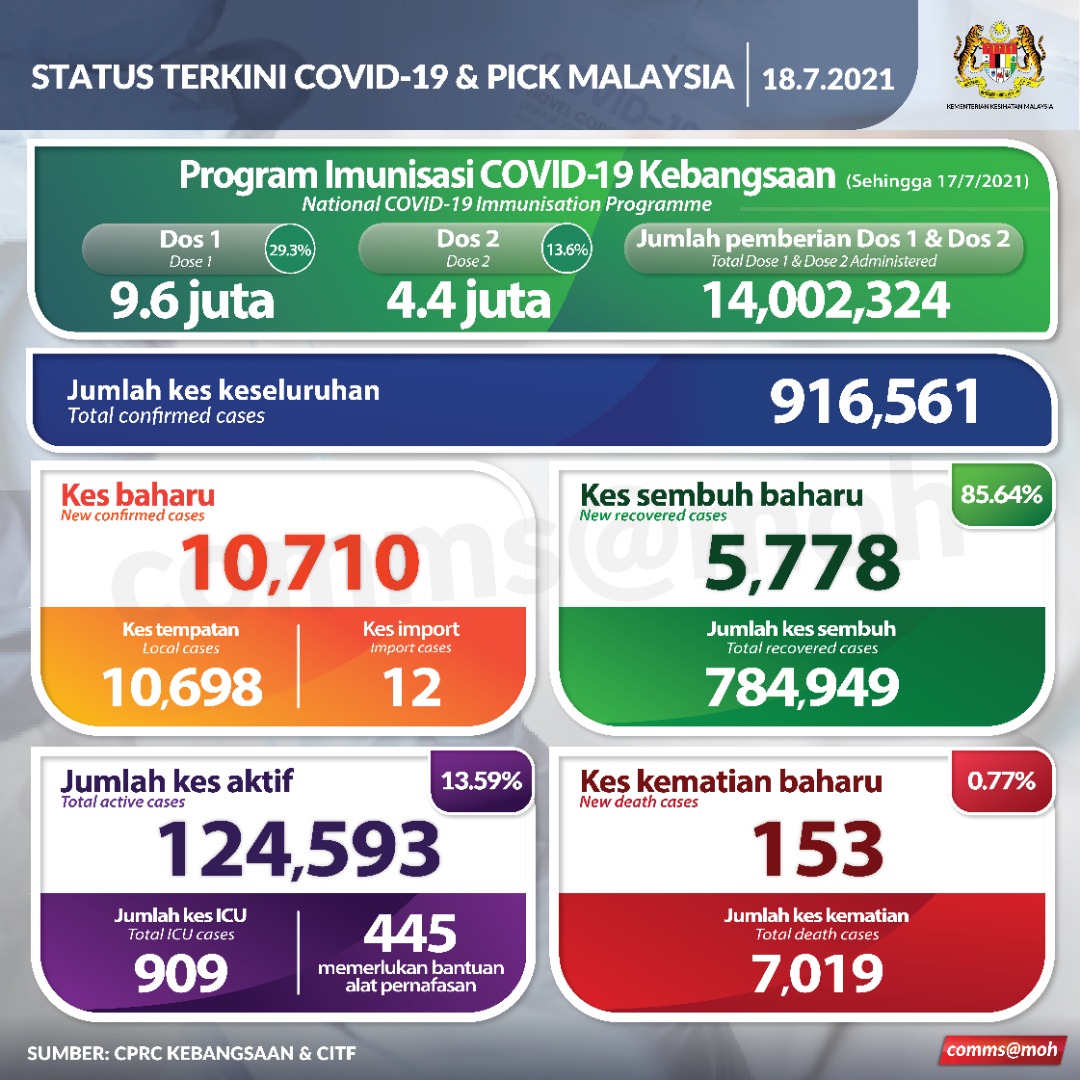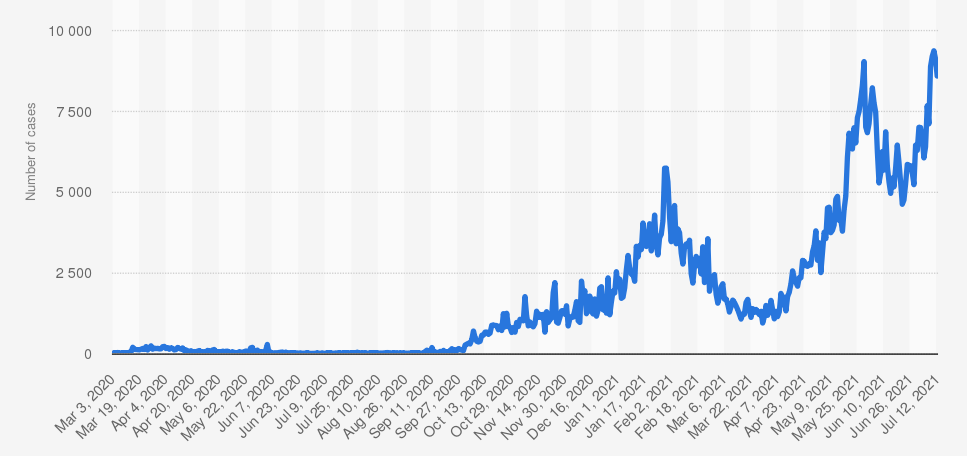An unbalanced focus on daily new cases is both incomplete and highly misleading. Here’s a better way to approach the data.
Distilling a large, complex set of constantly changing data points down to just one easily communicated metric is actually a lot easier than it should be… but as you might guess, it’s also the wrong approach.
Consider this: If you’re buying a new smartphone – a highly complex and precise little piece of technology with a lot of different, often interdependent components and variable functions – and you only looked at the number of megapixels offered by the device’s camera to make your purchasing decision, you’d not be doing yourself any favours. There’s simply a lot more to consider – and frankly, more important measurements – to inform your decision-making.
And so it goes with a pandemic. The very nature of a global outbreak like this one means that an immense amount of data gets generated on a daily basis. Trying to clearly, accurately, and promptly communicate to the masses all the nuances of contagion and virulence, along with information about variants and severity and spread… well you get the point. It’s hard.
(To illustrate the challenges of communicating effectively during a crisis, just look to July 12. On that date, Federal Territories Minister Annuar Musa either misstated an important point or it was misreported, stating that 80% of KL’s population had been fully vaccinated, which was definitely not the case; that was a figure corresponding to those having received at least one dose, but that is not the same as being fully vaccinated. On the date in question, only 26.6% of KL’s residents had received both vaccine doses.)

So, authorities have to filter and select the data that gets reported to the public on a daily basis. And we all know what the number one metric has always been: daily new cases. And predictably, the outsize focus on that data point means that it disproportionately drives policy decisions, too.
So, to employ the current vernacular, there was a low-key freak-out in Malaysia recently when the new cases surpassed the purely psychological 10,000 mark. Then the daily new cases promptly jumped to over 13,000, eliciting even more feverish hand-wringing. Malaysia Breaches Five Figures for Six Consecutive Days! trumpeted some headlines, a genuinely meaningless statement that only serves to needlessly fuel panic and despair. Both 10,300 and 94,800 are five-figure numbers, yet in a pandemic, I think we all know which is preferable. (There is also nothing magical about going from 9,999 to 10,000.)
But in a moment of detailed openness, Malaysia’s health authorities actually passed along some extremely meaningful data which, if properly considered and digested, could go a long way to alleviating the panic.
The numbers reported for the date of July 16 included new cases at 12,541. Now, you could easily slip into despair if you looked only at that figure, but this time, we actually got a useful, granular breakdown from the Ministry of Health.
LIKE A HURRICANE
Malaysia’s Ministry of Health has put Covid-19 cases into five ranked tiers, separated into categories, rather reminiscent of the Saffir-Simpson hurricane scale:
- Category 1: no symptoms
- Category 2: mild symptoms, no medical intervention necessary
- Category 3: infection has spread, affecting the lungs
- Category 4: pneumonia-like symptoms; oxygen therapy required
- Category 5: critical illness; ventilator support required
People who live in hurricane-prone areas will barely flinch when a Cat 1 storm is forecast to possibly hit. But a Cat 5 storm? That will get everyone’s attention. Indeed, only storms of Cat 3 or higher are considered to be ‘major’ hurricanes. And so it goes with the Covid categories.
Going back to the 12,541 cases on July 16: According to the MoH, of those new cases, 51.9% had no symptoms at all. Another 46.6% had only mild symptoms. Collectively, these groups accounted for 98.5% of all new cases.
That bears repeating: 98.5% had no symptoms or only mild symptoms. That’s 12,352 cases out of the 12,541 reported.
And there was even more information provided. Of the 189 cases that fell into categories 3 through 5:
- 86 cases were Category 3
- 49 cases were Category 4
- 54 cases were Category 5
On the following day, the breakdown was fairly similar, as seen below. (A familiarity with Bahasa Malaysia helps, but isn’t necessary.)

To be clear, this is not meant to downplay the seriousness of Covid-19. The risk, even with Cat 1 and Cat 2 diagnoses, is that these infected individuals can, and often do, spread the virus. There is also, of course, the possibility of people with Cat 2 infections getting worse, not better.
The idea behind looking deeper into the data is context. In a country of some 33 million people, on July 16, only 189 of them were diagnosed with moderate to severe cases of Covid-19. Those numbers suggest that 99.99942% of everyone in Malaysia was free of the virus’s most serious consequences on that day.
So what does this all mean?
THE SCIENCE SUPPORTS A SHIFT
When the general points above are considered in tandem with the proven real-world effectiveness of the vaccines – yes, all of them – in preventing serious illness or death from Covid-19, it’s leading some countries to enact a paradigm shift in their approach to the pandemic.
Increasingly, governments are recognising that a zero-transmission goal is virtually unattainable, and that most measures enacted in the pursuit of that goal are devastating to people’s lives, businesses, and the broader economy. It’s unclear whether Malaysia’s government has accepted this, but there are small signs that they are possibly starting to move slowly in this direction.

A more data-supported approach appears to recognise that, unless the SARS-CoV-2 virus just fizzles out on its own, it’s likely here to stay, and we are better served by learning to coexist with it rather than trying to eradicate it. A much more workable idea is that we can – through the use of vaccines and the slow, incremental build-up of natural immunity – render the coronavirus far, far less lethal. People will still get infected, and the virus will likely become one of a number of respiratory pathogens that we live with (on a pronounced seasonal cycle in temperate climates, but less so in the tropics), but we’ll live with it just as we do now with the common cold and the flu.
THE TAKEAWAY
We appreciate the by-category breakdown of new cases, if only to provide a much-needed sense of context, and hope to see more of this kind of information broadly reported in Malaysia’s media circles.
We also feel that the daily new case count, while certainly not irrelevant, is not the most important daily number to focus on. We agree with those who advise looking at the number of ICU cases, the number of recoveries, the number of deaths (and trends, too, as ICU cases and deaths tend to trail new cases), and perhaps most critically, the number of vaccine doses administered.
It’s also worth noting that a big reason that Malaysia’s daily case numbers have risen so sharply is because they’ve increased the amount of testing, which impacts new case counts due to not just the sheer number of tests conducted, but also the locations in which those tests are deployed. It stands to reason that if you roll out a lot of tests in a known area of outbreaks, you’ll end up with more positive cases than if you utilised a more random, widespread approach.

Knowing that the reported case numbers are higher now because of the scale and location of where Malaysia is testing certainly helps to stave off the panic. And beyond that, the vaccination data alone should keep you from “daily case despair” and we’re glad that it’s finally being prominently included on the daily updates on the MySejahtera app now.
You can see how many first-dose jabs have been given (9.6 million, or 29.3% of the population) and how many fully vaccinated people there are (4.4 million, or 13.6% of the population). It’s important to understand that one is a subset of the other (after all, you can’t get a second dose until you’ve had a first dose), and this point has caused a lot of confusion in public reporting. Indeed, even in this infographic, the 9.6 million figure is not entirely correct, and is definitely easily confused. To explain, as of the date of the graphic above, here are the precise figures:
- The number of people who have received BOTH doses is 4,426,472
- The number of people who have received ONLY ONE dose is 5,149,380
- The number of people who have received EITHER one dose or two doses is 9,575,852 (the sum of the first two figures, and frankly, a data point of limited usefulness, as it can easily confuse people and is, as noted, somewhat misrepresented in the infographic above)
- The TOTAL number of doses given is 14,002,324 (this is the first number doubled – as it accounts for two doses per person – and added to the second number)
Also important to note:
- As all of the vaccines approved for us in Malaysia require two doses, the total number of doses administered does NOT equate to the number of people vaccinated; note that the first three numbers listed above represent people while the fourth represents doses of vaccine
- The key number to focus on here is the number of fully vaccinated people (4.4 million) and how much of the population that is (13.6%)
- Malaysia’s population is roughly 32.72 million
- It takes 7 to 14 days following the second dose for maximum antibodies to be produced, and consequently, for maximum immunity to be achieved
- Real-world experience suggests that when we get more than about 30% of the population fully vaccinated (about 9.8 million people), we should see a significant and fairly rapid drop in ICU cases and deaths, hopefully along with a decrease in community spread, as well
- Malaysia is targeting to vaccinate 80% of the population, or about 26.2 million people, and has now accelerated the timeframe for reaching that goal to the just the remainder of this year (previously, the vaccination schedule was set to extend into the first months of 2022)
As always, a reminder: Stay safe. Get vaccinated. Take care of each other.
"ExpatGo welcomes and encourages comments, input, and divergent opinions. However, we kindly request that you use suitable language in your comments, and refrain from any sort of personal attack, hate speech, or disparaging rhetoric. Comments not in line with this are subject to removal from the site. "



















